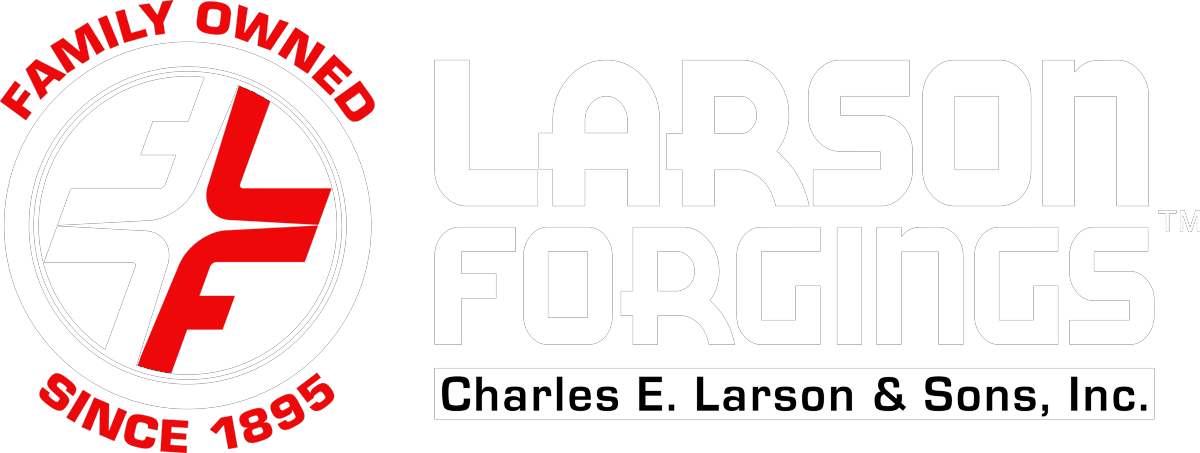ADVANTAGES OF FORGING
Why Choose Forging?
Forging vs. Casting
Plain and simple…forgings are stronger, more durable and reliable and they cost less than castings. Forging generates superior predictable strength with a guarantee of performance. Forging secures increased strength from heat and pressure. Casting does not.
Why is forging better than casting?
- Forging offers an improved metallic yield
- Forging saves time and money in machining hours
- Forging improves quality and ensures fewer revisions
- Forging allows the manufacture of a wide range of products in various sizes
- Forging responds better to thermal treatment
- Forging eliminates the need for chemical segregations
- Forging creates minimum levels of porosity
- Forging allows the manufacture of products without the need for tight process controls and inspections, required for casting
Forging vs. Welding
In side by side testing, forging offers consistently improved performance and strength when compared to welding. In forging, heat and pressure are applied to improve metal grain structure. In welding, the heating and cooling process results in inconsistent grain structure and reduced strength. A welded seam can lead to part failure, while forged products have no internal voids, creating a more resilient product in the event of stress or impact.
Forging simplifies production. Manufacturing using the welding process requires a careful selection of welding materials and close monitoring, which increases the cost of production. Forging ensures a simplified production process and results in improved quality, reliability and consistency.
Why is forging better than welding?
- Forging results in increased reliability by eliminating the welded joint
- Forging results in reduced rejections
- Forging results in improved quality
- The forging process results in easy manufacturing and easy inspections
Forging vs. Powder Metallurgy
Forging produces improved strength, enhanced integrity and increased design flexibility while reducing costs, when compared to powder metallurgy. Powder metallurgy creates products with high porosity, which reduces reliability. Forging generates improved ductility, improved impact toughness, higher fracture toughness and increased fatigue strength.
Powder metallurgy requires extensive machining to create special shapes and features. With forging, even secondary operations can be simple and cost-effective. Powder metallurgy often requires large production runs to justify initial costs. The forging process costs considerably less, increasing profitability and flexibility to meet market demands.
Why is forging better than powder metallurgy?
- Forging creates a grain that ensures strength at critical stress points
- Forging ensures grain refinement which assures a defect-free product
- Secondary forging operations are minimal and may include finish machining, hole drilling and other simple steps.
- Forging is inherently sound and creates consistently excellent machined surface finishes.
- The forging process is not restricted to pressing direction.
- Forging is more cost-effective and can respond quickly to changes in product demand
Forging vs. Plating
When you need a broad range of sizes and materials, forging is the better option when compared to plating. Products made from steel bar and plate are limited to the existing size and dimensions. Forging allows for greater versatility and is used to create custom-tailored solutions that other metalworking procedures cannot match. Forgings can be manufactured a wide range of sizes from parts from less than once inch to huge machinery parts that weigh more than 450,000 lbs.
Forgings require fewer secondary refinements. With some grades of bar and plate, additional operations such as turning, grinding and polishing are required to remove irregularities and achieve the necessary finish, dimensional accuracy, machine-ability and strength. Many times, forgings can be utilized without requiring additional refinements.
Why is forging better than plating?
- Forging enables the production of custom manufactured pieces
- Forging enables directional flow that improves the strength of impact
- Forging produces higher quality mechanical resistance properties
- Forging results in improved metallic yield with reduced material costs
- Forging does not require elaborate cutting processes
- Forging creates an improved metallurgical microstructure
- Forging results in improved internal quality
Forging vs. Reinforced Plastics & Composites
Forging materials out-last and offer improved performance over composites across the board in physical and mechanical property comparisons. Forging is especially beneficial in impact resistance and compression strength. From a performance perspective, forging offers far more reliable service performance over a wider temperature range. Reinforced plastics often suffer deterioration and damage resulting in poor service performance in extreme temperatures. Forged products remain strong and reliable in a wide range of extreme temperatures and conditions.
Why is forging better than reinforced plastics and composites?
- Forging is less expensive than reinforced plastics
- Forging achieves high production rates that cannot be matched with reinforced plastics
- While reinforced plastic is a new process with a limited track record, forging is a known and trusted process that delivers consistent results
- Forgings maintain their quality and deliver consistent performance over a wide range of temperatures
- Forged materials deliver superior results in impact resistance and compression strength


